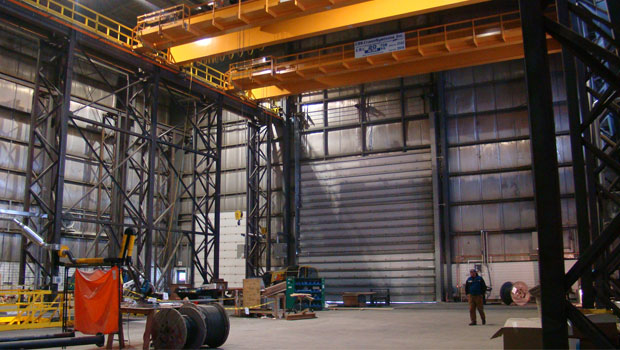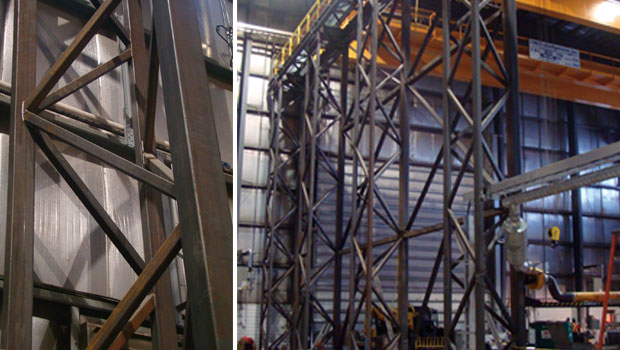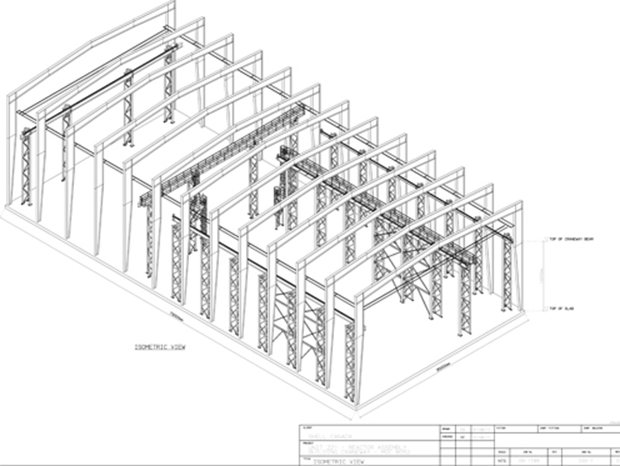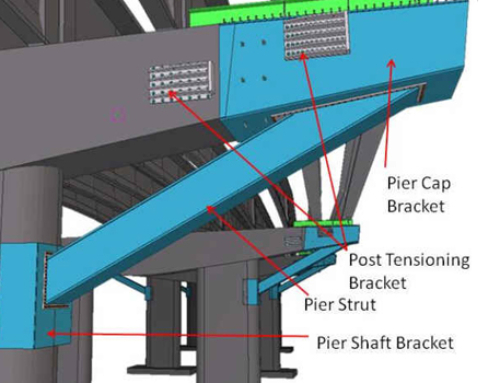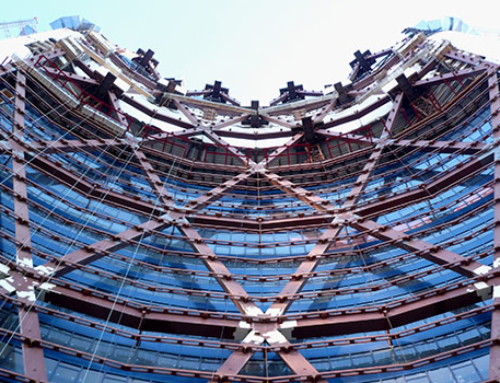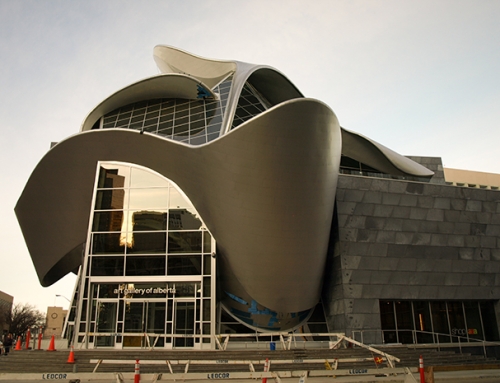Project Description
As industrial construction goes, designing and building overhead crane runway support systems is nothing out of the ordinary. But the project to retrofit the Shell Canada Energy Reactor Building into a fabrication facility presented the design-build team with unique challenges requiring creative design and installation solutions.
Shell wanted to convert a large empty pre-engineered steel building into a fabrication facility to support a scheduled shutdown and for future use. The building was to accommodate three interior overhead crane runways supporting one five-ton, one ten-ton, and two 20-ton cranes. Shell specified that the support system was to be independent of the existing building structure. In addition, the company wanted the system to achieve maximum hook height.
Shell provided performance specifications and put the job up for bid as a design-build project with the successful contractor responsible for complete design, detailing, fabrication, installation, testing and commissioning of the crane support structures and the four overhead cranes.
“We had to do considerable design up front in order to bid,” says Brian Watson, President of Eskimo Steel Ltd. and project manager. His company brought BPTEC-DNW Engineering Ltd. in on the preliminary design phase.
“One of the early challenges was the special requirement to absolutely maximize the area of travel of the overhead cranes,” Watson says. “It was akin to trying to stretch a cube in three dimensions without touching the perimeter.”
The team’s solution was a series of three-dimensional tower columns made of HSS and recessed between the existing pre-engineered building columns. The towers support not only the gravity loads but also the lateral loads imposed by the cranes, eliminating the need for horizontal trusses and maximizing overhead crane span and lateral hook travel.
“This system is unique in that it’s totally free-standing,” Watson says. “It’s also quite tall in relation to the span.” “What’s also unique is that the towers are cantilevered from the pre-existing one-metre thick structural slab on grade,” says Brian Kennedy, Director of BPTEC-DNW Engineering Ltd. “We utilized the strength of that slab to anchor the towers, so we didn’t have to build a new foundation.”
Keeping the amount of relocation of existing structural members and mechanical and electrical equipment to a minimum was critical. Early in the process, the design team undertook a site survey and entered the data into StruCad 3D software.
“The pre-survey and 3D modeling enabled early clash detection and allowed us to determine how everything was going to fit together without conflict,” Kennedy says. “The information we had on the site survey was very accurate, so there were no surprises on site,” Watson adds. “As a result, everything went quite efficiently.”
Scheduling was a major challenge on the project. “The timeline was tight between the awarding of the bid to commissioning of the cranes,” Watson says. “This meant we had to work as a team, share information and get Shell’s approvals quickly at each step.”
“I think the collaboration and the thought given to identifying problems before they arose and identifying solutions made the project flow tremendously from start to finish,” Kennedy adds.
Project Team
Owner: Shell Canada Energy
Structural Engineer: BPTEC-DNW Engineering Ltd.
Project Manager / General Contractor: Eskimo Steel Ltd.
Fabricator: Eskimo Steel Ltd.
Detailer: Eskimo Steel Ltd.

